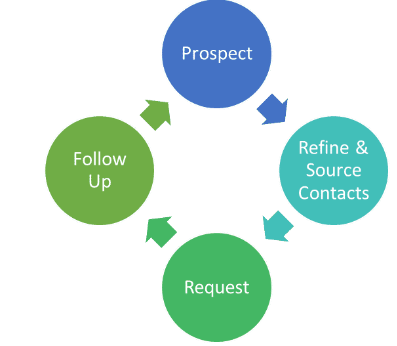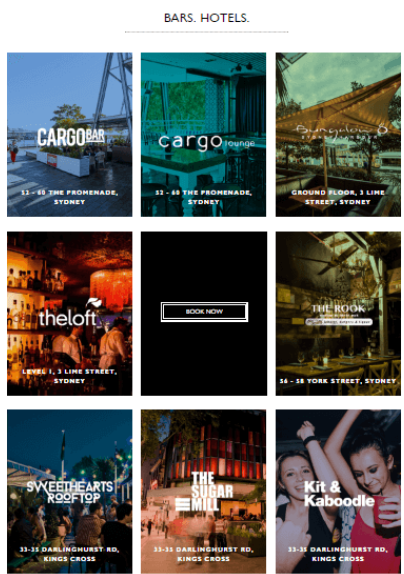Unlinked brand mentions
What is it, and how does it work?
Quick Reminder: The quantity and quality of links pointing to your site has recently been nominated as one of top two ranking factors in Google’s algorithm for SEO.
Let’s skip the fluff and dive straight in, shall we?
Brands are constantly being mentioned on the web from different sources and contexts. The most common sources I come across are:
- News Websites ( niche & mainstream )
- Online Magazines
- Influencer Blogs
- Business Partners
- Government / Non-Profit Organisations
However, many mentions don’t include links to the brand’s website.
Brand mentions represent a golden opportunity for brands to earn links to their website. That exercise, though, is not strictly limited to the brand itself. Mentions of general managers, CEOs and anyone who works in the company can also present an opportunity, should the context be suitable.

What do I need to do?
The process can be split into four steps and repeated in a recurring fashion. The more frequently the brand is mentioned, the larger the prospect list will be and the longer it will take to complete the process:

Prospect
This is where the initial prospecting is performed. Using certain tools and scraping techniques, you’ll find mentions of your company’s brand(s) on the web. To maximise the potential of this exercise, search for mentions of all brands owned by the business.
For example: The Keystone Group own a range of brands with each having its own page on the site. In this case, you would search for mentions of all individual brands owned by the Keystone Group.

How to prospect?
There are a few ways to build a prospect list:
- Using Tools such as Buzz Sumo ; Mention ; Rank Tank’s Unlinked Mention Finder
- Using Google’s Search Results:
- Enter the query in Google and use advanced search operators to narrow down your search results.
- Collect search results using scraping plugins and Google Sheets. Take a minute to see it in action here
- Repeat this exercise to all the brands owned by the business.
Refine & Source Contacts:
In this step, you will closely analyse your prospect list and remove any of the following:
- Irrelevant mentions: mentions in comments, random online tools, mentions of irrelevant references ( When “Mars” is mentioned, it’ll not always be about your favourite chocolate bar but potentially about the planet Mars, Bruno Mars, Veronica Mars and the list can go and on)
- Negative mentions: let’s hope your brand hasn’t been mentioned in any negative PR stories or product review posts, but if it has, you would want to ditch those mentions off your prospect list and move on.
- Linking mentions: Mentions that already link to your website (using xpath query & Google Sheets you’ll be able to detect if there is a link to your site)
As you’re refining your prospect list, pull the contact details of the ones you want to go after. I suggest aiming for phone numbers rather than emails. Emails and contact forms should be your last resort type of contact.
Request:
Now that you’ve got a filtered list of opportunities with their contact details, it’s time to put on your sales cap, pick up the phone and make some calls. When submitting requests, keep it simple and explain what you’re after in layman's terms. Further details can be provided in a follow-up email.
Your success will depend on how you submit your request and who you’re dealing with. This task needs a person with solid communication skills and immaculate phone manners. Try and get a hold of the editor in charge as they will likely be responsible of granting your request.
Tip: You’d want to be able to know how you’re doing in terms of results at any point in time. Properly organising and managing your spreadsheet will greatly help in tracking results, making any changes to your strategy and staying on top of things.
Follow Up:
Don’t miss any easy opportunities; not all promises are delivered, and not all requests are trusted. Editors often take time to actually add the link, and sometimes they completely forget. On the other hand, your initial email may not have received the attention it needed for some reason or another. Follow-ups will ensure that you don’t miss out on any real opportunities to earn links. I’d suggest doing two follow-up rounds with a week difference in between.
Link reclamation
Link reclamation is the process of finding broken URLs on your site with links pointing to them. Such links wouldn’t be valuable to your site since the landing page returns a 404 status code. Therefore, it is important to detect broken URLs and redirect them to their most relevant pages so your links transmit some authority to your site. Additionally, some links could send traffic to your site, and you wouldn’t want that traffic to land on a broken page.
Link Reclamation Tools:
A couple of tools will help you capture broken backlink opportunities. The ideal approach is to use a combination of the following tools and remove any duplicates:
Once you’ve compiled a unique list of broken URLs with links pointing to them, your next step is to map each URL to its live equivalent page. You’ll end up having a list of 301 redirects that you can pass on to your developers to implement.

Partners & suppliers links
The idea of the partners & suppliers links is quite simple yet very effective: Investigate your partners & suppliers’ websites and find opportunities to add links to your site. Leveraging your business relationships should be one of the first opportunities to investigate. After all, I believe that links from local businesses, especially if such businesses are in the same industry as yours, will send strong signals to Google that your business is an authority in its niche.
How to Tackle Partners / Suppliers Link Opportunities?
Firstly, we need to create a prospect list of partners and suppliers. It is suggested to conduct internal meetings to come up with the most comprehensive list of Partners and Suppliers.
Tip: Involve your accounts payable person when it comes to suppliers, as they should be able to provide you with a list of all suppliers whom your company processes payments to.
The second step is the most important part of the process, and it can get a bit tricky. Here is what’s involved in the second step:
- Filter your prospect list. It’s likely that not all your partners & suppliers are suitable for this exercise, as it depends on their business, website and the nature of your relationship with them. For that reason, you need to narrow down your list to include more practical opportunities. Try to include specific points of contact for each prospect especially if you have a good relationship with them.
- Develop tactics. Investigate your final prospect list carefully and develop tactics to target each. Here are some common tactics that I have come across :
- Testimonial: Do they have a testimonials page? Can your business offer them a testimonial?
- Partners Section: Do they have a page listing their partners? Can your business be added?
- Useful Links / Resources: Does their site host a useful links section?
- Fresh Content Section: Do they have a blog section where you can provide useful content or be featured in one of their blogs?
- Industry Content: Do you have unique, relevant industry content on your site that they can link to?
Once you’ve developed tactics for each prospect, pitch your requests. Track your results as you progress, and don’t forget to follow up.
Written by
Chloe Zheng





